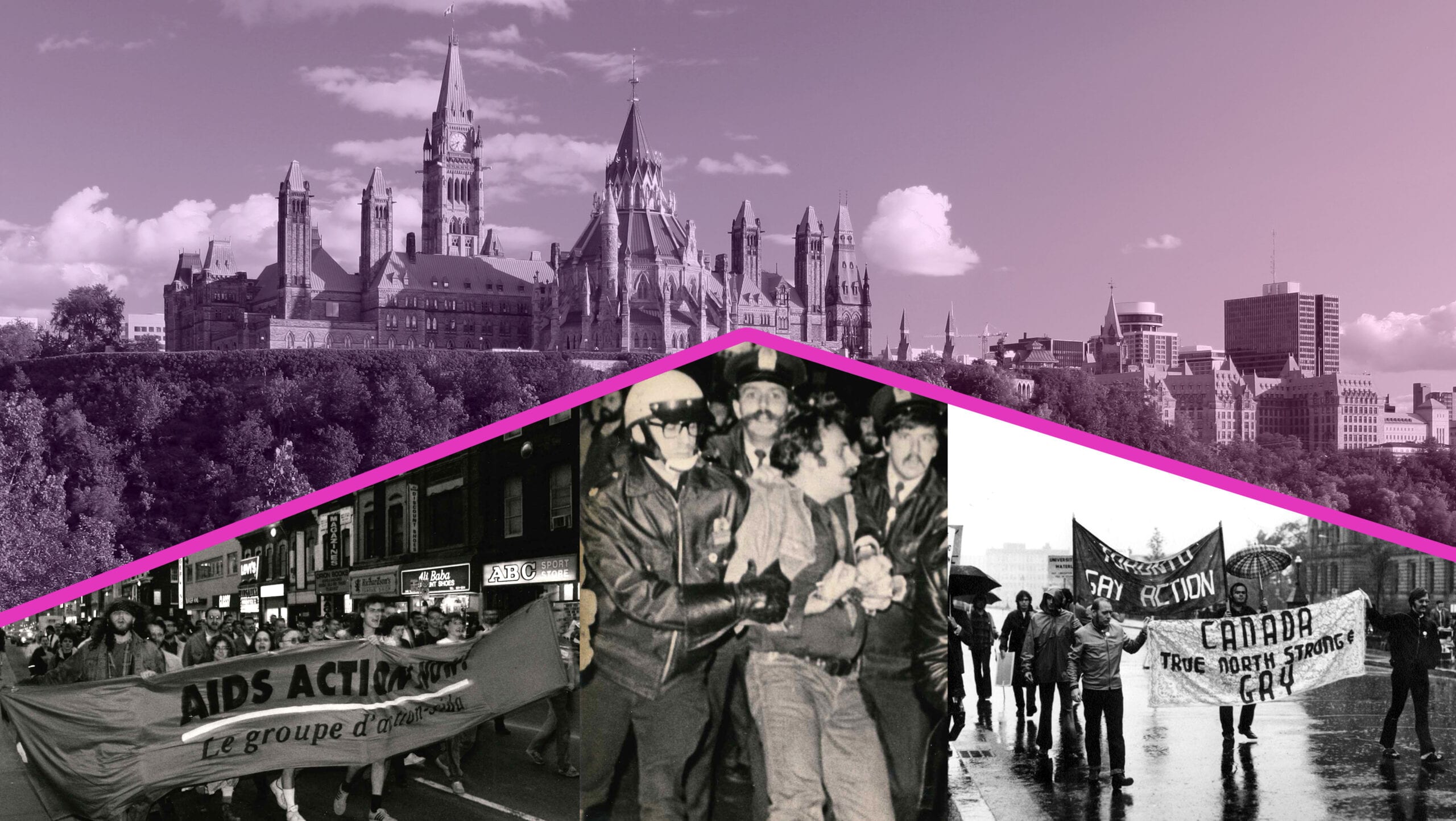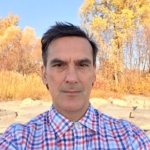Located just a stone’s throw from Parliament, an undeveloped spot in downtown Ottawa has been selected by the National Capital Commission’s board of directors as the site for a national monument celebrating LGBTQ2 activism and resistance in the face of state-sponsored homophobia.
The monument’s location was unveiled Thursday. It’s down the road from the Supreme Court and the Library and Archives Canada on unceded Algonquin territory that overlooks the Ottawa River and the city of Gatineau.
Michelle Douglas, executive director of the LGBT Purge Fund, a non-profit organization whose mandate includes the establishment of the monument, calls the location “prestigious” and “powerful.” She says it was the best her group had surveyed.
“Early on I said to the government, we will not be relegated to a ditch or a swamp. So don’t even try,” Douglas says. “The choice is a profoundly important physical location [that matches the monument’s] symbolic value.”
What is the LGBT Purge fund?
The LGBT Purge Fund was established in 2018 to manage monies from a class-action lawsuit brought forward by former Canadian Armed Forces personnel, RCMP officers and federal civil servants who had been fired from their jobs for being LGBTQ2.
From the 1950s to the 1990s, thousands of queer and trans individuals were fired, as per official government policy, in what has come to be known as the “LGBT Purge.” More than 700 survivors of the Purge, most now in their 60s and 70s, came forward last year to receive financial settlements.
Douglas was part of the suit. She had been serving as an officer in the Canadian Armed Forces when she was discharged in 1989 for being a lesbian. “The pain experienced by those who lived through the Purge is often quite deep and profound and still present,” she says.
“I know these people. I think Canadians are generally surprised to know that they were treated so bad: Arrested, interrogated—often for days, brutally so at times—put into medical institutions, given shock treatment, criminalized, sexually assaulted, physically assaulted,” she says. “The humiliation was brutal. I still talk about it today and can recall those feelings. There’s real trauma behind this.”
(The scale of oppression and its impact is detailed in the 2018 documentary The Fruit Machine, which is viewable online.)
Why does this monument matter?
As part of the court-ordered mandate, the monument must embrace the wider LGBTQ2 communities in Canada and their history. “It has to be broader than the Purge period because we need to acknowledge those who were early activists,” Douglas says. “[Those] who resisted discrimination and fought against criminalization, as well as the activists fighting when HIV/AIDS was at its most devastating. It’s got to do many things.”
The LGBT Purge Fund conducted an extensive consultation process with both survivors of the Purge and members of the wider community. “We heard words like ‘activism’ and ‘resistance’ but also ‘joy’ through Pride, and ‘sorrow’ and ‘hatred,’” Douglas says. “So we’ve heard many different things. And now it’s to the designers, to the artists, to take this vision and make a design that’s symbolic and important and that captures these things in artistic ways.”
Ottawa Mayor Jim Watson is in his fourth term; after 30-plus years as a public servant, he only came out as gay in 2019. “If I had been from another generation and was openly gay, I would have had a very good chance of losing my job and being penalized and persecuted and ostracized,” he says. “The monument will remind people on a regular basis who come to visit Ottawa or live here that this dark chapter of our history, in fact, did exist.”
In the 1990s, permanent AIDS memorials began to appear in many cities throughout the west, but there are still relatively few LGBTQ-specific monuments in the world. The Homomonument in Amsterdam, which opened in 1987 and commemorates the persecution of gay men and lesbians under the Nazi regime and beyond, is considered the first in the world to honour the LGBTQ community. Since it opened, other monuments to queer victims of Naziism have appeared from Berlin and Cologne, to Sydney and Tel Aviv. The Transgender Memorial Garden in St. Louis, Missouri, which honours trans individuals killed by anti-trans violence, was created in 2015.
In 2016 the Stonewall Inn in New York City’s Greenwich Village was designated a National Monument to mark the site of the 1969 Stonewall riots (along with the adjacent block of Christopher Street and Christopher Street Park, which is home to a sculpture called “Gay Liberation Monument,” installed in 1992). It is the first national monument in the U.S. designated as an LGBTQ historic site.
“We have to use the opportunity we’ve been given through the monument to educate people, to inspire, to create an opportunity for people to reflect about human rights broadly and about the LGBTQ2 community specifically,” Michelle Douglas says. “Canada is doing something that hopefully can be aspirational for others internationally.
“We want to do something as bold and big and global as possible.”
Heritage Canada will launch an international competition in the next few months to determine the design of the monument. Scheduled for completion in 2024, it will join a small but growing number of sites that celebrate queer and trans communities internationally. With a budget of $8 million, the Canadian project promises to be one of the more ambitious ones.


 Why you can trust Xtra
Why you can trust Xtra


